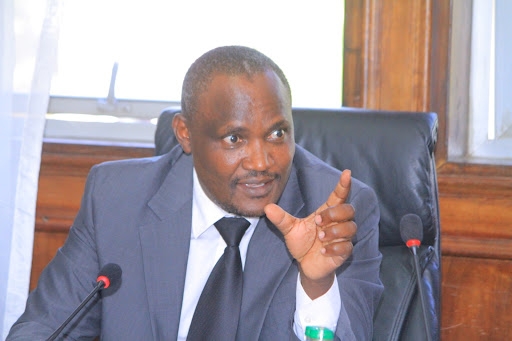The transitional process to the new Social Health Authority (SHA) regime has already kicked off in earnest, with operations now slated to officially begin on October 1.
SHA replaces the 66-year-old National Health Insurance Fund (NHIF).
For beginners, SHA is a state agency established to manage the Social Health Insurance Fund (SHIF), one of the three funds.
Others are the Primary Health Care Fund (PHFCF) and the Emergency Chronic and Critical Illness Fund (ECCF).
These three funds have different mandates, and their monies have different sources.
SHIF is the contributory insurance, while the other two are financed by the exchequer.
According to President William Ruto, the new programme seeks to not only address gaps that exist under NHIF but also provide enhanced services to all Kenyans irrespective of their economic status.
The Head of State said the shift in the delivery of health services is critical in the race toward realisation of the Universal Health Coverage (UHC), which has remained unattainable despite past efforts to make it a reality.
The new social health institution was initially meant to begin operations on July 1, 2024, but its implementation was put off due to a number of setbacks.
How is SHA different from NHIF?
Over the years, NHIF has undergone numerous reforms to enhance its effectiveness and to accommodate the changing healthcare needs of Kenyans.
In 2021, for instance, the agency introduced new contribution rates, ranging from a minimum of Sh150 to a maximum of Sh1,700 for employees
Why the shift from NHIF?
Social Health Insurance (SHI) is a form of health financing mechanism based on risk and resource pooling to increase the efficiency of the healthcare system that ensures that people pay premiums into a pooled fund that can be used for those who need the services at no cost when they need the services.
It seeks to ensure equity and access to health services by the poor and those in the informal sector, who were left out for the years NHIF has been in existence.
The ultimate goal of a health programme is to provide equitable and affordable access to healthcare services for all members of society and increase health insurance coverage.
The existence of fragmented pools targeting different populations creates inefficiencies, which result in increased costs of health services.
SHI proposes three consolidated pools to address the inefficiencies.
According to President Ruto, the transition was necessary because a high number of Kenyans are currently being subjected to financial constraints due to catastrophic illnesses.
He noted that the new platform promotes equity and fairness in contribution, through households and not individuals.
How much will I be paying?
Under NHIF, Kenyans are deducted between Sh150 to Sh1,700 for salaried workers and Sh500 for self-employed.
Kenyans who earn Sh20,000 remit Sh750, while those getting Sh50,000 are required to remit Sh1,200.
Those earning Sh100,000 and above are deducted Sh1,700.
The maximum cap of Sh1,700 for those earning Sh100,000 or more will be eliminated.
In this new regime, all workers are expected to contribute 2.75 per cent of their salaries towards the new health fund.
Contributions have been made, in such that not all Kenyans contribute an equal amount.
The amount of contribution by those not in formal employment is determined through a mean testing instrument.
The minimum monthly premium has been slashed from Sh500 to Sh300, a move aimed at reducing the burden of those at the bottom of the pyramid.
More fundamentally, the government will, for the first time, pay for all vulnerable Kenyans who are deemed to be unable to contribute.
The national and county governments will pay contributions to needy Kenyans.
The national government will contribute Sh13,300 on behalf of individuals listed as vulnerable by the State Department of Social Protection.
One of the major shortcomings of NHIF is its reliance on only salaried Kenyans for premiums, undermining its effort to provide affordable and quality health care for all Kenyans.
Under SHIF, those earning Sh20,000 will be deducted Sh550, with Kenyans getting Sh50,000 paying Sh1,375.
Kenyans earning Sh100,000 will be deducted Sh2,750, and those getting Sh200,000 will pay Sh5,500.
Those earning Sh500,000 will pay Sh13,750 while Kenyans getting Sh1 million and above will pay Sh27,500.
Daniel Mwai, who advises the president on health financing, said it is impossible to achieve universal coverage by relying on only salaried Kenyans for health financing.
“NHIF made it mandatory for only salaried Kenyans to pay for insurance. Only 20 per cent of Kenyans are salaried, which means 80 per cent of Kenyans had to rely on out-of-pocket to settle their hospital bills,” he said.
Foreigners
Contribution to the fund will be mandatory for all adults seeking government services.
The law makes it compulsory for all foreigners visiting the country for more than 12 months to enlist and contribute to the social health insurance scheme.
Visitors coming into the country for less than a year will need to buy travel health insurance, which must be recognised under Kenyan insurance laws and regulations.
How are we transforming from NHIF to SHIF?
The government targets to register about 15 million Kenyans into the new programme.
More than a million people had been registered by July in a process done through self-registration using USSD code *147#.
Registration is also conducted through the website http://sha.go.ke with the assistance of Community Health Promoters or by visiting NHIF offices and other designated registration points.
The transition clause 2 (1) provides for the transfer of rights, powers, liabilities, and duties to be taken over by SHA after the effective date of the Act, i.e, 22nd November 2023.
The Transition Committee, created in February 2024, will work for six months, and the two boards (NHIF and SHA) will work in consultation with the Ministry of Health to ensure the transition process is completed within the 12 months provided for in the law.
The Committee will develop a legal and institutional framework; guidelines, and operational mechanism in regard to assets and liabilities, human resources and pensions, and other staff benefits, and develop a clear roadmap for the winding up of NHIF.
The Primary Health Care Fund (PHCF), which is accessible for free, covers outpatient services at community facilities classified under primary care networks (PCN).
The Emergency, Chronic and Critical Illness Fund (ECCIF) has been set up specifically to deal with diseases such as cancer, hypertension, and diabetes, which are not only expensive to treat but require long-term management, applying untold pressure on household incomes.












